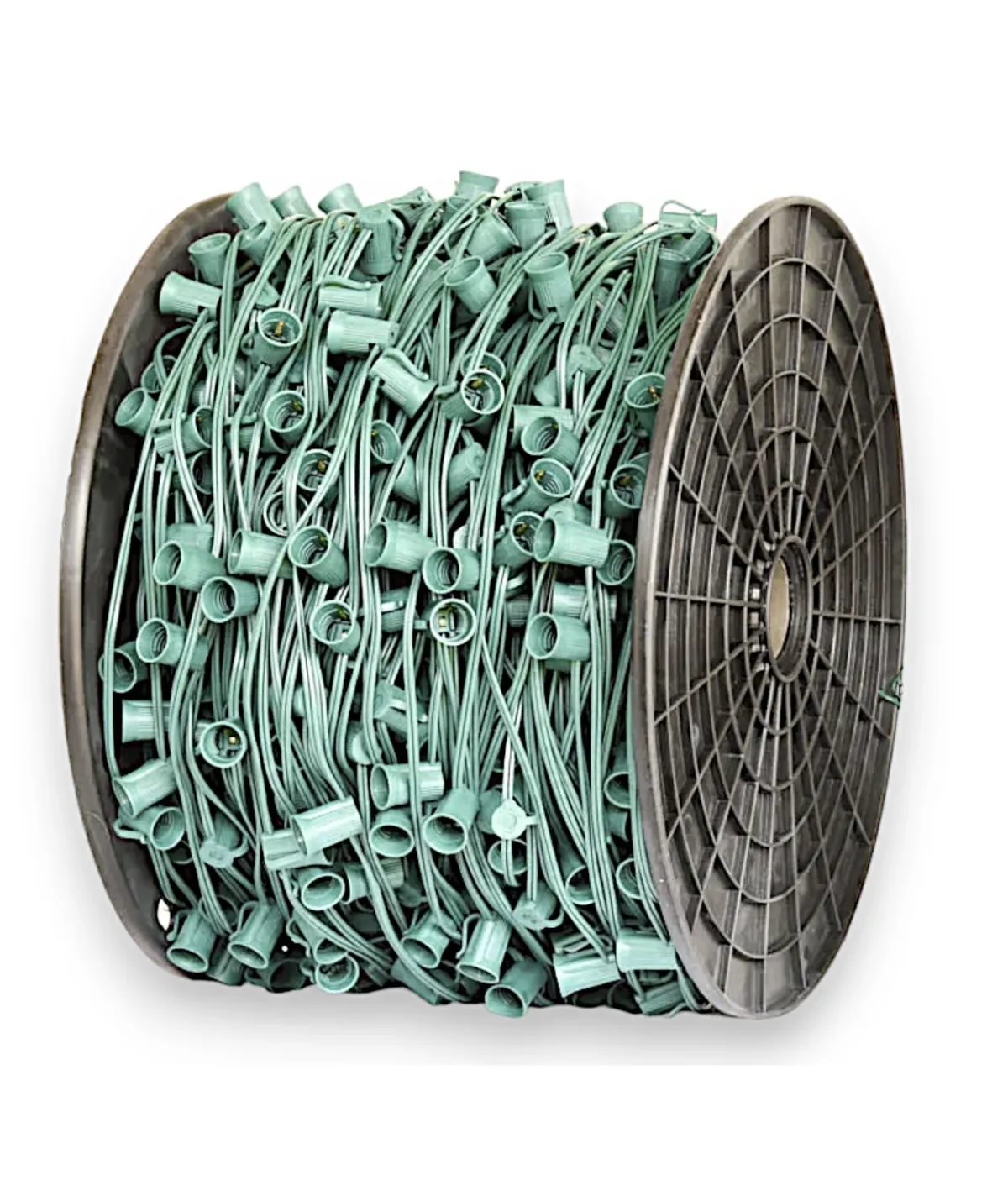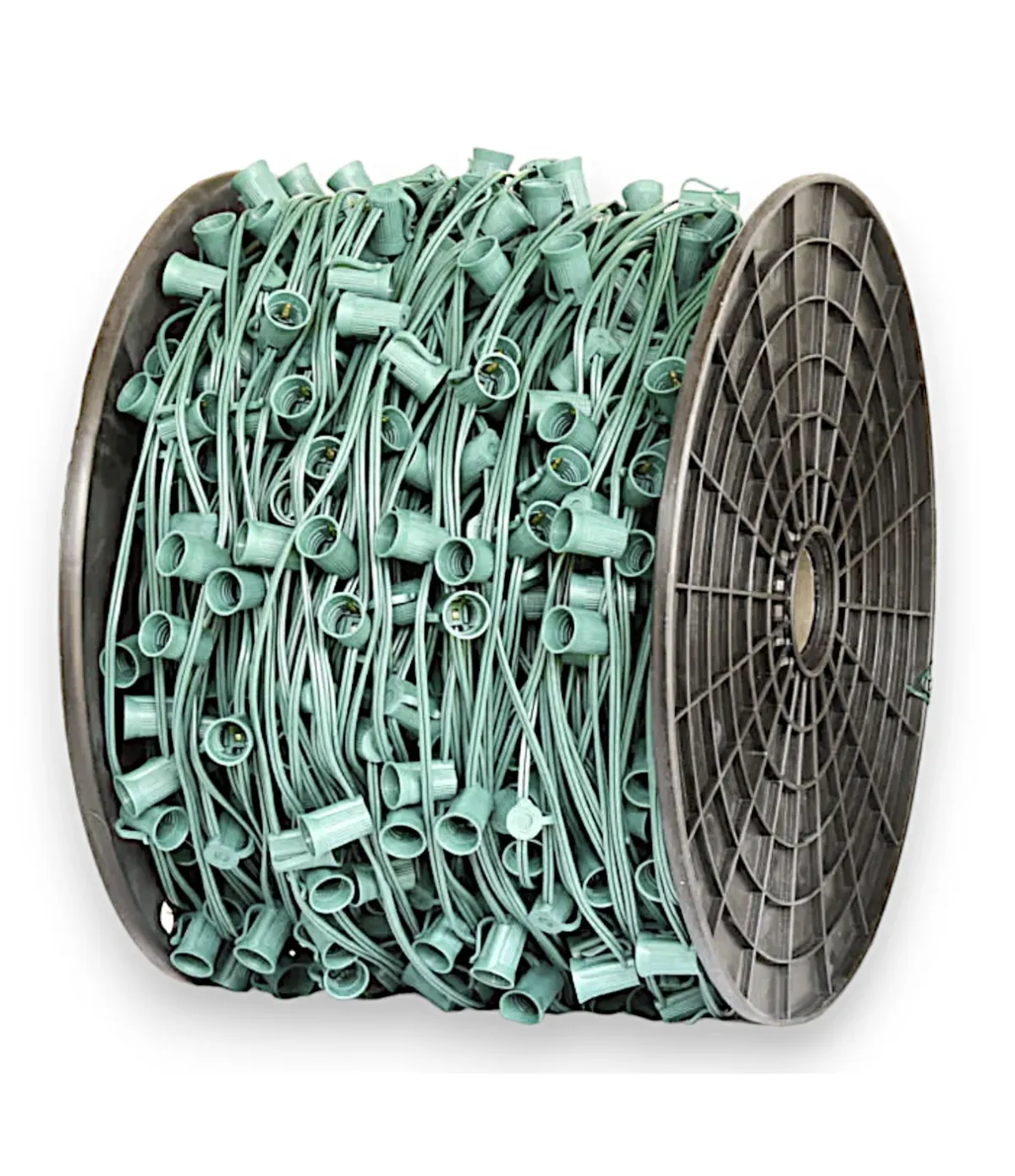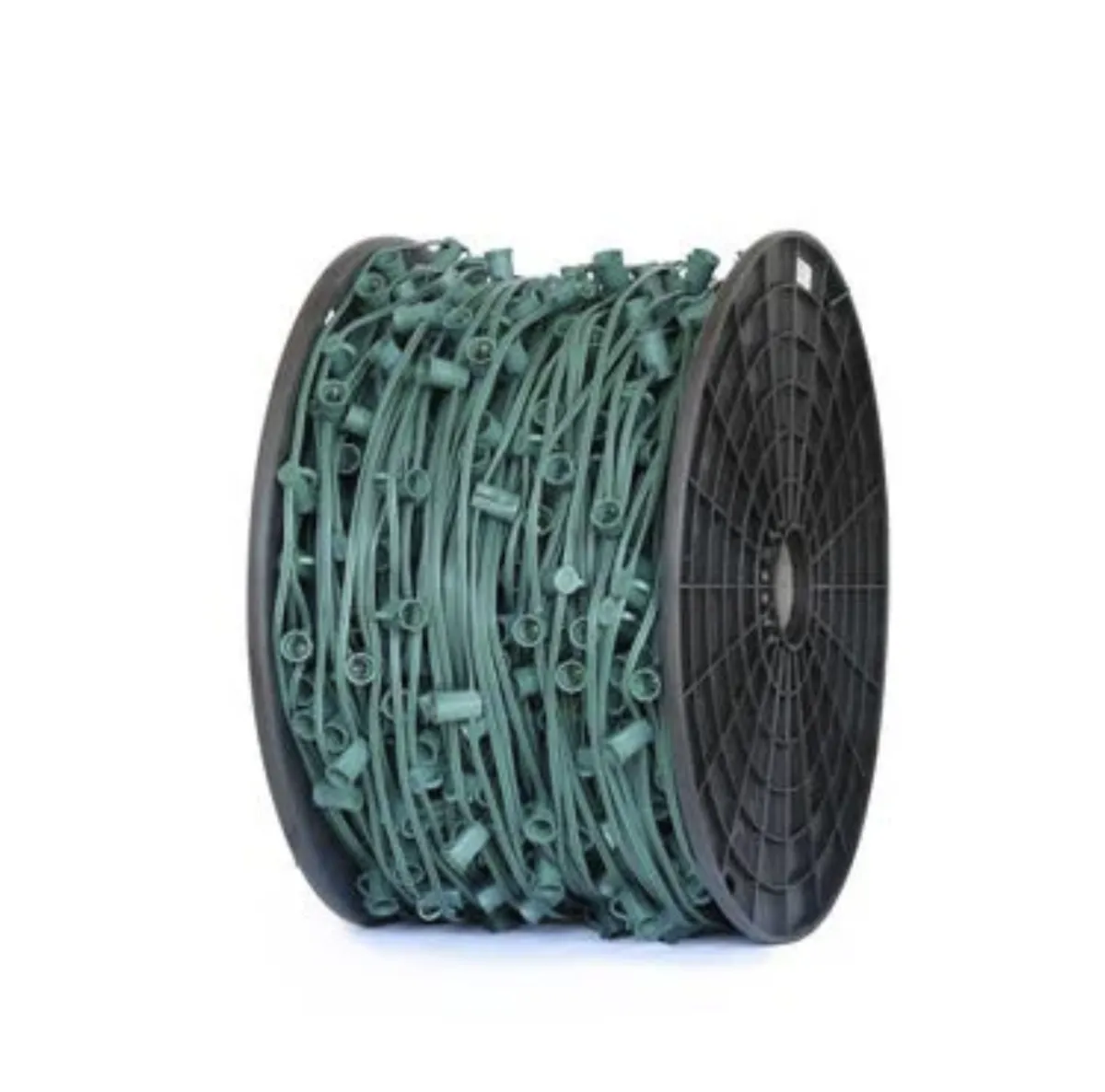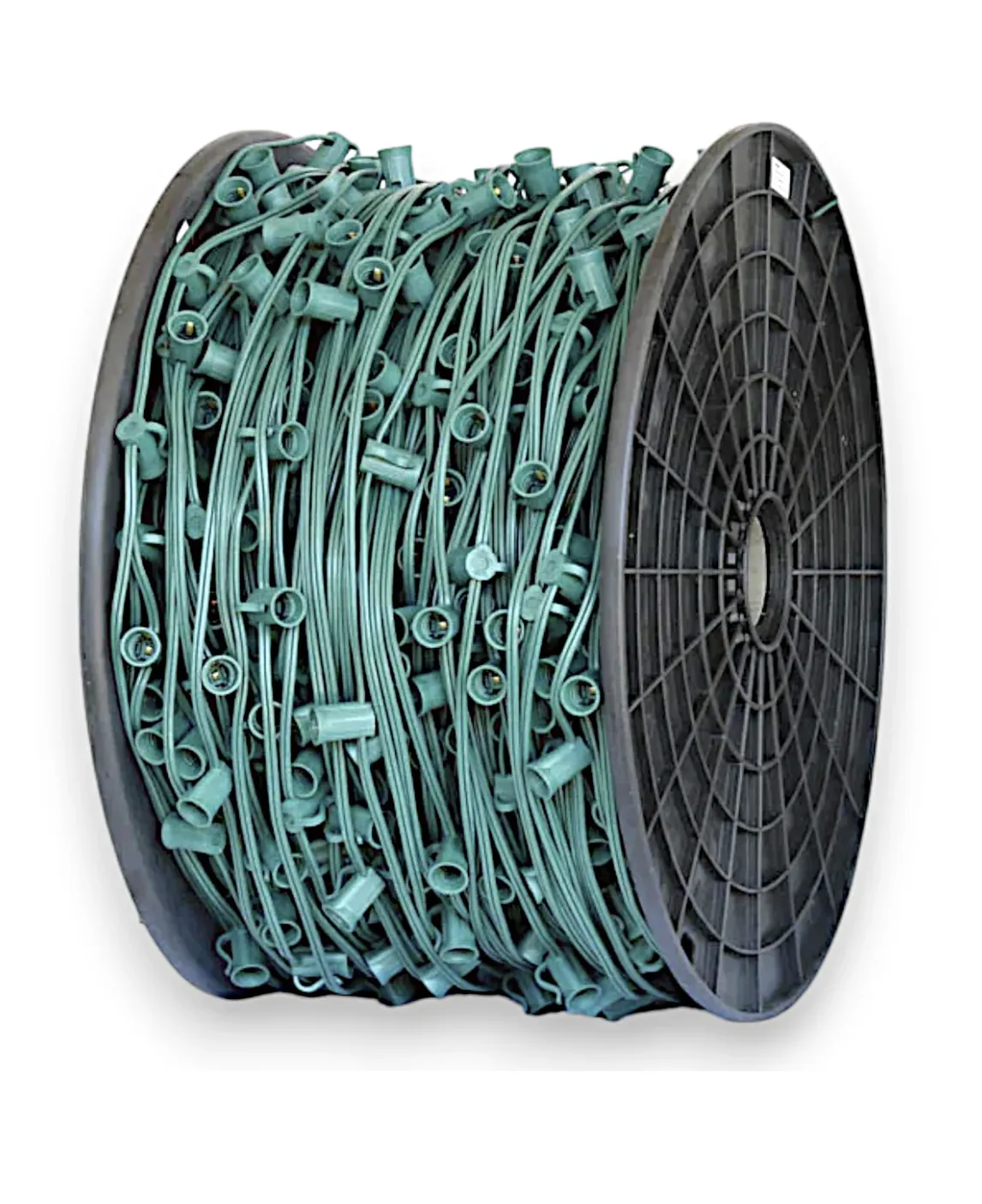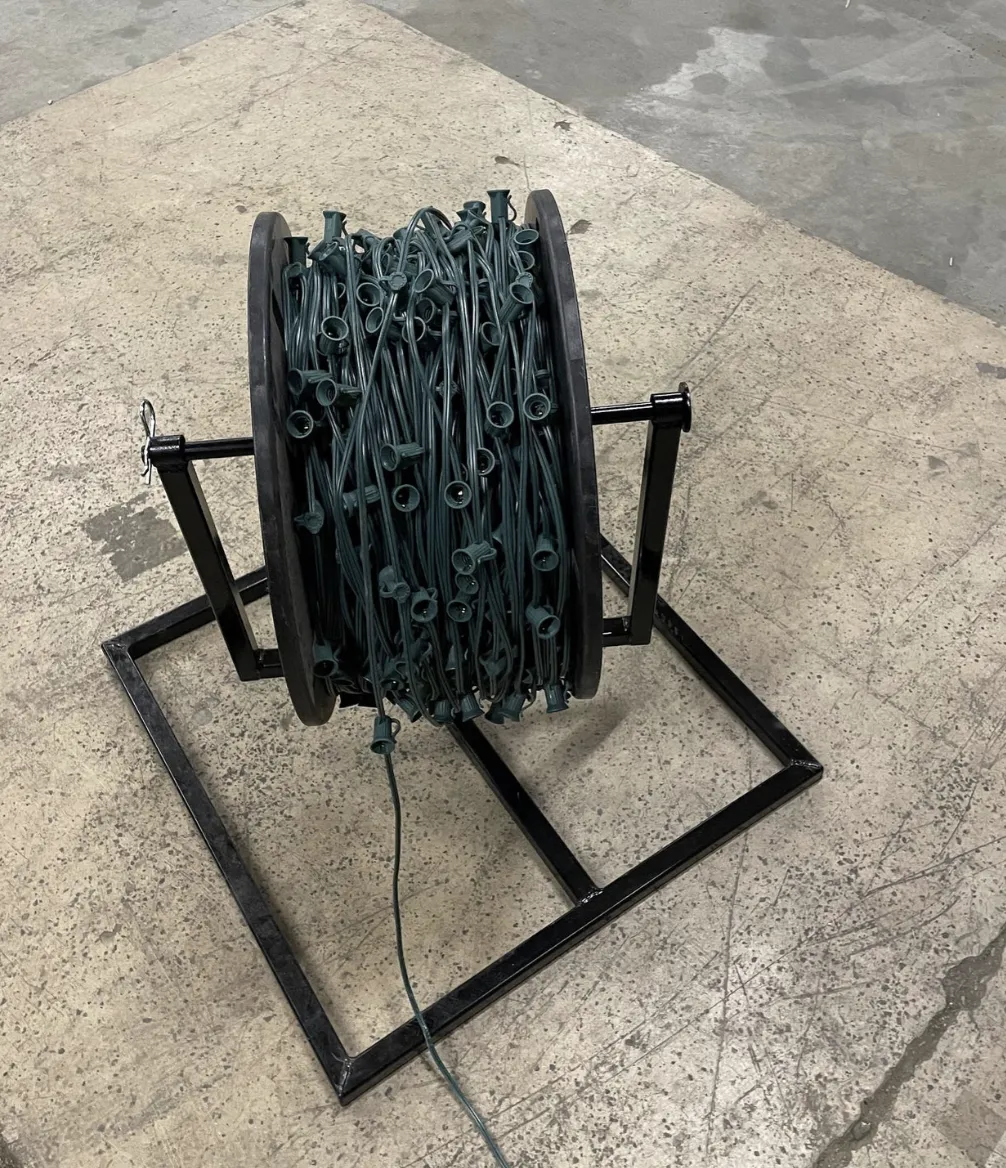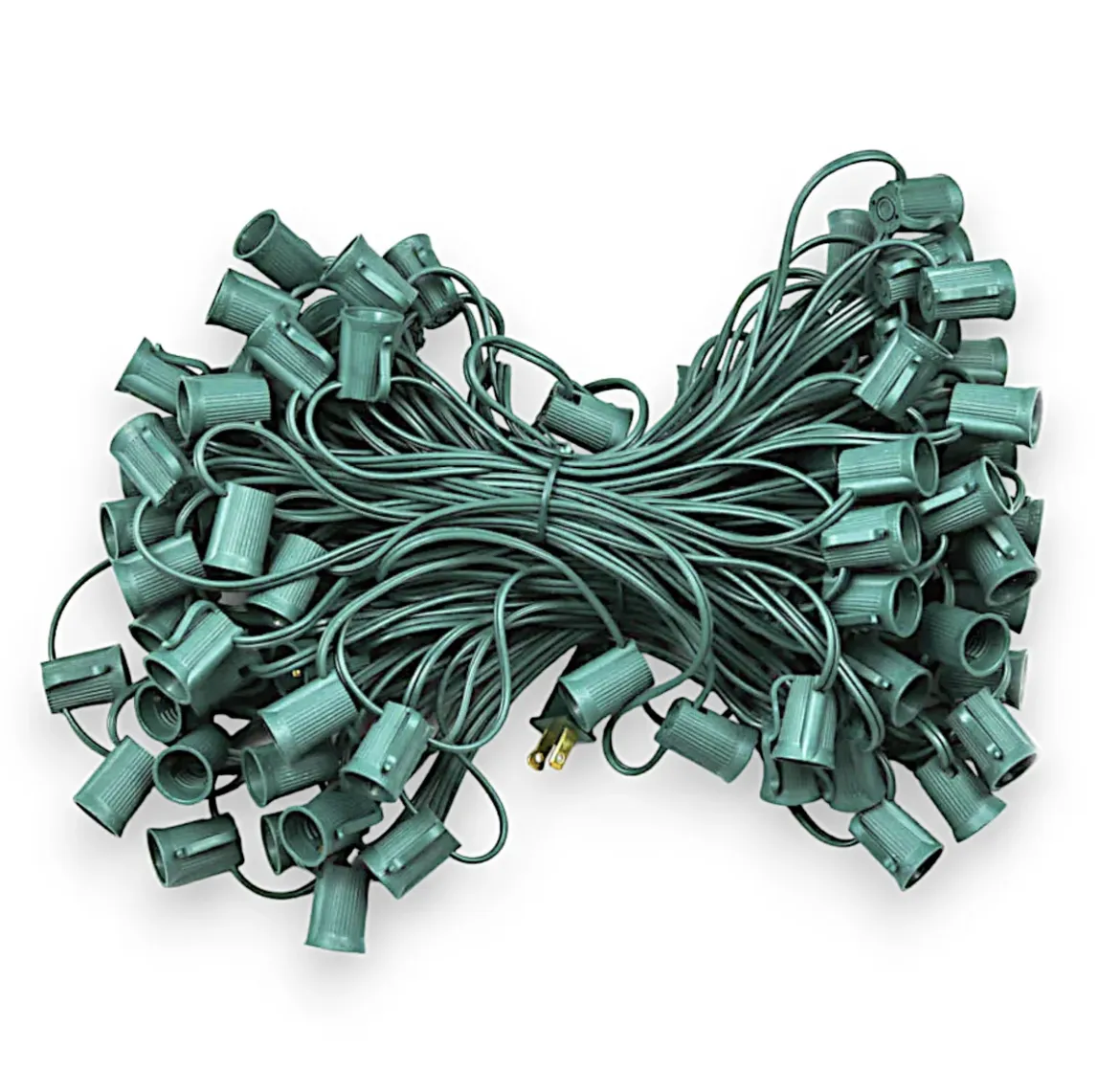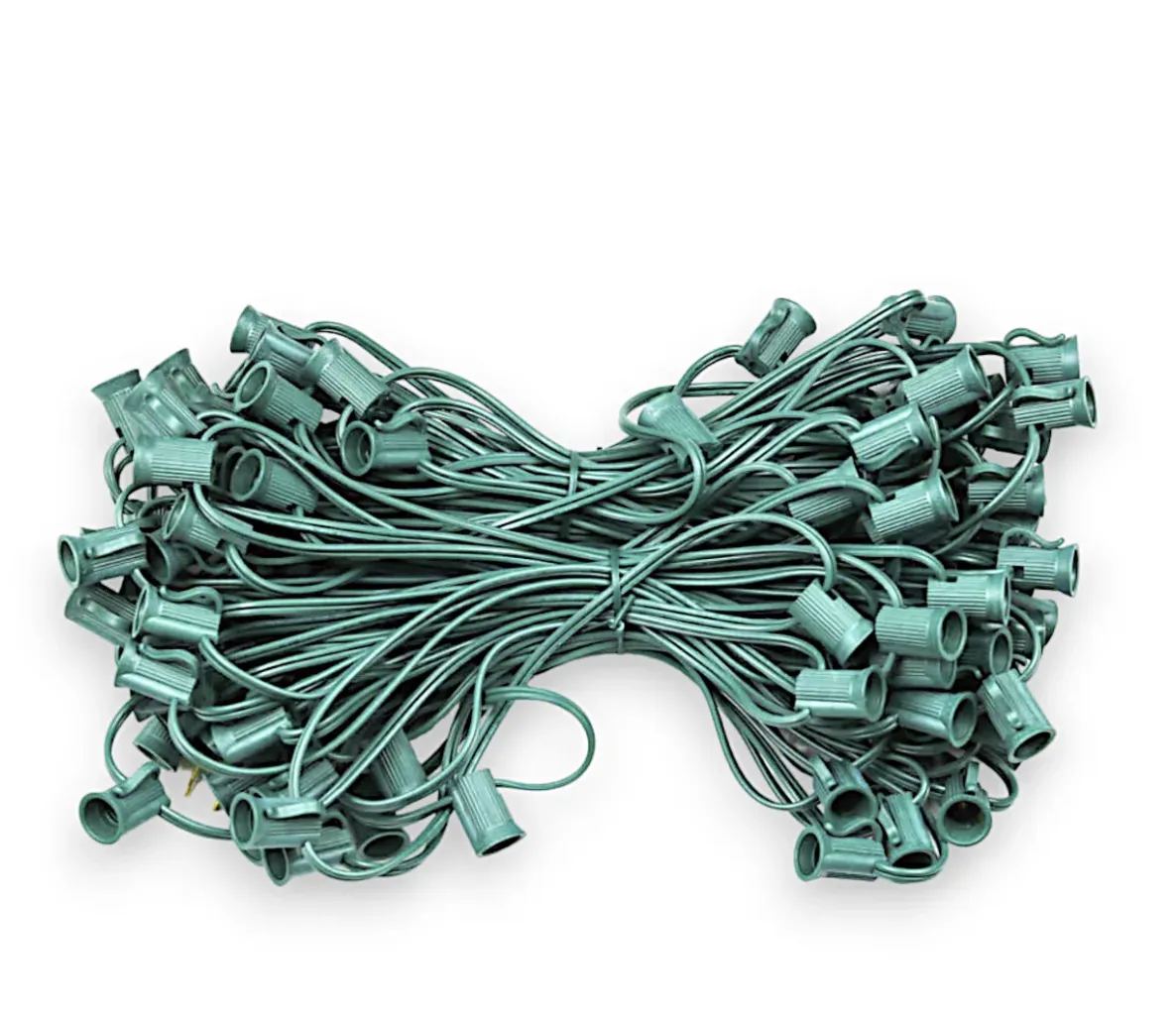C9 & C7 Socket Spools & Stringers
Discover our premium collection of socket wire spools and stringers, the essential foundation for creating stunning light displays. Designed for both professional installers and ambitious homeowners, our range includes bulk C7 and C9 socket wire spools with flexible spacing options, pre-made light stringers for quick setups, and convenient accessories like spool holders. These versatile, durable components are perfect for residential rooflines, enchanting tree displays, and large-scale commercial projects. Suitable for indoor and outdoor use, and compatible with both incandescent and LED bulbs, our professional-grade products offer the quality and flexibility needed to bring your creative lighting visions to life. Explore our selection and elevate your illumination projects with unmatched versatility and reliability.
Socket Spools
C9 1000' Socket Spool
Our C9 1000' Bulk Spool of Socket Wire, available in green or white, offers professional-grade flexibility for custom lighting projects. With spacing options from 6" to 48", it's ideal for both residential rooflines (12-15" spacing) and tree installations (24-48" spacing). The durable SPT-1 wire withstands outdoor conditions and is compatible with both incandescent and LED C9 bulbs. This customizable spool allows for precise length cutting, minimizing waste and maximizing efficiency for high-quality, adaptable lighting displays.
C9 500' Socket Spool
Our C9 500' Bulk Spool of Green Wire, available with 12" (500 sockets) or 15" (400 sockets) spacing, is perfect for professional-grade Christmas lighting installations. Featuring commercial-quality SPT-1, 8-amp wire and durable E17 sockets, this customizable spool is ideal for large-scale outdoor projects. Easily cut to desired lengths and pair with snap-on plugs (sold separately) for tailored lighting solutions in both residential and commercial settings. The 12" spacing offers vibrant, balanced lighting, while the 15" option provides a classic look with fewer bulbs per run.
C9 1000' 12"&15" Socket Wire Spool (SPT-2)
Our C9 1000' Socket Wire Spool (SPT-2) offers professional-grade flexibility with dual 12" and 15" spacing options. This customizable spool features heavy-duty SPT-2 wire for enhanced durability in all weather conditions. The 12" spacing is perfect for dense, vibrant displays on rooflines and pathways, while the 15" option provides a classic look with fewer bulbs per run. Compatible with both incandescent and LED C9 bulbs, this 1000' spool allows for precise cutting to fit any residential or commercial lighting project, ensuring efficient and long-lasting installations.
C7 1000' Green Wire Socket Spool (SPT-2)
Our 1000' bulk spool of green SPT-2 wire features 15" spacing with 1000 C7 sockets, ideal for commercial and residential outdoor displays. This 8-amp (960-watt) commercial-grade wire with Admiral Brand sockets allows for custom-length installations using snap-on plugs (sold separately). Suitable for indoor/outdoor use, it accommodates up to 160 sockets with 5-watt incandescent bulbs or 384 sockets with 1-watt LED bulbs per run. This versatile, durable C7 light line is perfect for creating professional-quality lighting displays in various settings.
C7 1000' Socket Spool
Our C7 1000' Bulk Spool of Socket Wire offers professional-grade flexibility for custom lighting projects. Available in green or white, with spacing options from 12" to 36", it's ideal for both residential rooflines (12-15" spacing) and tree installations (24-36" spacing). The durable SPT-1 wire withstands outdoor conditions and is compatible with both incandescent and LED C7 bulbs. This customizable spool allows for precise length cutting, minimizing waste and maximizing efficiency for high-quality, adaptable lighting displays in various settings.
C9/C7 500' Magnetic Spool
The Fastest Way to Install Holiday Lights on Metal Surfaces. Save time and effort this holiday season with Magnetic Spools. Designed for quick and easy installation, these magnetic spools are perfect for decorating your home or office building. The magnetic sockets eliminate the need for traditional mounting clips, making your installations faster and more efficient. Whether you’re lining rooflines, gutters, or fences, these spools are ideal for any surface where ferrous metal is present.
Available in 500' & 250', 12" or 15" Spacing.
Socket Wire Stringers
C9 12" Spacing Socket Wire Stringers
Our 25', 50' or 100' Holiday Light String features professional-grade, UV-protected 18-gauge wire with sockets spaced 12" apart. Designed for both indoor and outdoor use, these UL-recognized strings offer 5 Amp capacity SPT-1 insulation and durable sockets with weep holes for all-weather performance. Compatible with E12 Candelabra base bulbs (C7, C9, G30; sold separately), these versatile strings allow end-to-end connectivity for extended displays. Perfect for holiday decorations, event lighting, and year-round use in residential and commercial settings. Available in Green, White, Brown and Black.
C7 12" Spacing Socket Wire Stringers
Our professional-grade 25', 50' or 100' light string features sockets spaced 12" apart, perfect for commercial and residential decorators. Designed for both indoor and outdoor use, it's compatible with incandescent or LED C7, G30, and G40 bulbs (sold separately). The SPT-1 insulated wire offers 5 Amp capacity and includes weep-hole sockets for all-weather performance. With male and female plugs for end-to-end connections, these UL-recognized strings can handle up to 480 watts per run. Ideal for holiday displays, patio lighting, and year-round events, these durable strings ensure long-lasting, brilliant illumination for any occasion. Available in Green, White, Brown and Black.
Frequently Asked Questions
What's the difference between socket wire spools and stringers?
cket wire spools are bulk reels of wire with sockets at regular intervals, allowing for custom-length cuts. Stringers are pre-cut lengths of socket wire, typically with plugs attached, ready for immediate use.
Can I use the same socket wire for both C7 and C9 bulbs?
No, C7 and C9 bulbs require different socket sizes. Always check the product specifications to ensure you're using the correct socket wire for your chosen bulb type.
How do I determine the right spacing for my project?
Common spacings are 12", 15", and 24". Use closer spacing (12"-15") for dense, vibrant displays on rooflines or fences. Wider spacing (24" or more) works well for tree wrapping or creating a more subtle effect.
Are these socket wires suitable for outdoor use?
Most of our socket wires are rated for both indoor and outdoor use. Look for products labeled as "weatherproof" or "outdoor-rated" for the best durability in external conditions.
How many bulbs can I safely connect on a single run?
This depends on the wire's amperage rating and the wattage of your bulbs. For example, on an 8-amp wire, you can typically run up to 160 sockets with 5-watt incandescent bulbs or 384 sockets with 1-watt LED bulbs. Always check the product specifications and local electrical codes for safe operation.
Discover Expert Tips on Our Blog

How to Go From $50K to $500K Christmas Lights
November brings snow, cold weather, and the critical window when Christmas lights businesses generate the majority of their annual revenue. For installers who've completed their first season generating $50,000-$100,000, the question becomes: how do you 10x that revenue to reach $500,000 or even a million dollars? The answer isn't working harder or installing more lights yourself—it's understanding the mathematics of scaling, implementing systems, and making strategic investments that multiply results.
This comprehensive guide reveals the exact frameworks successful installers use to scale from modest side hustles to legitimate six-figure and seven-figure businesses. These aren't theories—they're proven strategies that have helped installers go from broke garbage collectors to million-dollar business owners in under five years.
The Mathematics of Scaling: Why Average Ticket Determines Everything
Before discussing marketing strategies or hiring practices, understand the fundamental mathematics that determines whether scaling is possible. The equation is simple: Total Revenue = Number of Jobs × Average Ticket Price × Close Rate
The $50,000 Scenario at $1,000 Average Ticket
To generate $50,000 at $1,000 average ticket with a 20% close rate:
You need 50 completed jobs
At 20% close rate, that requires 250 leads
One crew can handle 50-75 jobs comfortably in a season
This is achievable for most installers. One crew, manageable lead flow, reasonable workload.
The $500,000 Challenge at $1,000 Average Ticket
Now scale to $500,000 at the same $1,000 average ticket:
You need 500 completed jobs
At 20% close rate, that requires 2,500 leads
That requires 6-8 crews working simultaneously
Managing 2,500 leads means sophisticated CRM systems, multiple salespeople, and complex logistics
The operational complexity becomes overwhelming. You're not running a Christmas lights business—you're running a logistics operation that happens to install lights.
The $500,000 Reality at $2,000 Average Ticket
Now calculate $500,000 at $2,000 average ticket:
You need 250 completed jobs
At 20% close rate, that requires 1,250 leads
That requires 2-3 crews maximum
One owner-operator handling sales can manage 1,250 leads with proper systems
This is why average ticket is everything. Doubling your average ticket doesn't just double revenue—it cuts operational complexity in half while maintaining the same revenue target.
One successful installer does over $1 million annually with 2-3 crews because he maintains $3,000-$4,000 average tickets. Another installer doing the same revenue runs 10-11 crews at $1,000 average tickets. Same revenue, vastly different stress levels and operational complexity.

Breaking the Average Ticket Ceiling: From $1,000 to $2,000+
Most installers plateau at $800-$1,200 average tickets because they quote only what customers explicitly request. When someone asks for "Christmas lights on my house," they quote the front roofline—period.
The Comprehensive Quoting Methodology
Present every property with a complete vision:
Front Roofline (Basic): Gutters and peaks facing the street - $800-$1,200
Ridge Lines and Architectural Details: Add peaks, hips, and ridge caps - Additional $400-$800
Ground Stake Pathway Lighting: Line walkways from sidewalk to entrance - Additional $300-$500
Tree Wrapping: Price at $30-$60 per foot of tree height. A 15-foot tree is $450-$900. Most properties have 2-3 wrappable trees.
Columns and Posts: $100-$600 per column depending on height
Wreaths: 48-inch wreaths at $200-$450, 60-inch wreaths at $350-$800
Garland: $180-$250 per 9-foot section, with most doors requiring 2-3 sections ($500-$750)
When you present all options, customers frequently select $2,500-$4,000 packages. When you present only rooflines, they select $1,000 packages. You cannot buy what isn't offered.
The Psychological Barrier
Many installers experience physical discomfort sending $4,000 quotes. The internal dialogue runs: "I would never pay $4,000 for Christmas lights. They'll think I'm crazy. I can't send this."
This reveals the fundamental problem: you're projecting your financial situation onto customers living in $750,000-$1,500,000 homes.
Consider the typical premium customer profile:
Mortgage payment: $8,000-$10,000 monthly
Vehicle payments: $2,000+ monthly for two vehicles
Starbucks habit: $300+ monthly ($3,600 annually—just on coffee)
Designer purchases: $5,000-$10,000 purses and shoes
These customers don't think like you. They're not shopping for the cheapest option—they're seeking the best experience, most reliable service, and least hassle. When presented properly, $3,000-$4,000 for professional holiday lighting is a minor expense that creates priceless family memories.
One installer's customer filmed her family's reaction pulling into the driveway after installation. The kids screamed with excitement, the parents cried with joy—that moment was worth $10,000 to that family, not just the $4,000 they paid. That's the magic you're selling, not bulbs and clips.
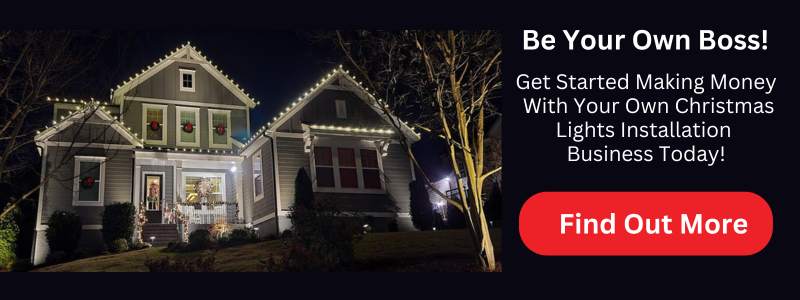
The Lead Generation Imperative: Marketing Math That Scales
The secret to scaling isn't installation skill or crew efficiency—it's lead generation. You can be the world's best installer, but if your phone doesn't ring, your skill is worthless.
Investment Requirements by Revenue Target
$50,000 Revenue Target: Invest $5,000 in marketing (10% of revenue) $100,000 Revenue Target: Invest $10,000 in marketing $500,000 Revenue Target: Invest $50,000 in marketing $1,000,000 Revenue Target: Invest $100,000 in marketing
One successful pressure washing business owner was a garbage collector four years ago. Last year he generated over $1 million in revenue—by investing $100,000 in marketing. That wasn't an expense; it was an investment that returned 10x.
The Time vs. Money Trade-Off
You have two paths to generate leads:
Option 1: Time Investment (Zero Budget)
Create 2-5 social media videos daily
Post 10-15 times daily across platforms (Facebook, Instagram, TikTok)
Knock 100+ doors weekly in target neighborhoods
Deploy 100-200 yard signs weekly
Engage in local Facebook groups constantly
This approach works—multiple installers generate $500,000+ annually with zero advertising budget. But it requires treating content creation and community engagement as a full-time job.
Option 2: Financial Investment
Facebook advertising: $15-$30 per lead
Google advertising: $20-$50 per lead
Professional SEO and web development
Direct mail campaigns
Professional photography and videography
Most successful scaled businesses use a hybrid approach: consistent organic content creation supplemented by strategic paid advertising during peak season.
The Lead Generation Reality Check
To generate 1,250 leads (the requirement for $500,000 at $2,000 average ticket and 20% close rate), you must implement multiple channels simultaneously:
Yard Signs: 500-800 signs deployed throughout the season
Social Media: Daily posting and engagement across all platforms
Paid Advertising: $200-$500 daily budget during November-December
Google Business Profile: Daily posts, systematic review collection, immediate response to all reviews
Website SEO: Professional site optimized for local search
Referral Systems: Incentivized referrals from existing customers
One installer posted over 105,000 views on Facebook in 28 days by taking action consistently. That translates to dozens of inbound leads without spending a dollar on advertising.

Hiring and Scaling Operations: Building Systems That Work
At $50,000 revenue, you can operate solo or with one helper. At $500,000, you need systems and teams.
Crew Requirements by Revenue
$50,000-$100,000: 1 crew (owner + 1 helper or owner solo) $100,000-$250,000: 1-2 crews (2-4 people) $250,000-$500,000: 2-3 crews (4-6 people) $500,000-$1,000,000: 3-5 crews (6-10 people)
The right number depends heavily on average ticket. Higher average tickets require fewer crews for the same revenue.
The Hiring Philosophy
Most installers blame employees when retention fails. "I went through 20 people last season—nobody wants to work."
If you've terminated 20 employees, the problem isn't the employees—it's you. Self-evaluate:
Are you a good leader? Do you provide clear direction, consistent feedback, and genuine appreciation?
Do you have systems? Checklists, processes, quality standards, and training programs?
Do you pay fairly? Not necessarily the highest wages, but competitive with transparent performance incentives?
Do you treat people humanely? Respect, dignity, and understanding that employees have lives outside work?
Remember: employees will perform at 80% of your standard. If you cut corners, skip steps, or tolerate subpar work, they'll operate at 60-70% of your already-compromised standard. Excellence starts with leadership.
Finding Quality Crew Members
Target Roofers: They're already comfortable on roofs, understand fall risks, and possess the physical capability required. Your job ads should explicitly state: "Experience working on roofs required. Outdoor work in all weather conditions."
Hire Attitude Over Experience: A person with no Christmas lights experience but excellent attitude, reliability, and work ethic is infinitely more valuable than someone with years of experience and a terrible attitude. Skills can be taught; character cannot.
Implement Systematic Training: Create checklists for every installation phase. Film training videos showing proper techniques. Conduct in-field training with direct supervision initially, gradually releasing autonomy as competence increases.
The Investment Mindset: Spending to Scale
The #1 mistake installers make when attempting to scale: refusing to invest money in growth.
The SEO Scam Story
One installer paid a "web expert" $4,000 in 2014 for a website that would "make the phone ring off the hook." Six months later—zero results. The website generated no traffic, no leads, no revenue.
This pattern repeats constantly. Installers get burned by scam artists promising results they can't deliver, then refuse to invest in legitimate marketing ever again.
Another installer recently paid a company $1,700 monthly for six months ($10,200 total) for a website he doesn't even own at contract end. He's generated one driveway cleaning job from it.
The Right Way to Invest
Yard Signs: Highest ROI marketing available. $300-$500 investment in 100 signs can generate $50,000-$100,000 in revenue from a single well-placed sign generating 10-20 jobs.
Professional Photography: $500-$1,000 investment in professional installation photos elevates all marketing materials, increases conversion rates, and justifies premium pricing.
CRM Systems: Jobber, Tinsel, or similar platforms ($50-$400 monthly) systematize operations, ensure follow-up, and prevent leads from falling through cracks.
Safety Equipment: Cougar Paws ($200), pitch hoppers ($130), ladder stabilizers ($50), proper harnesses—these aren't expenses, they're life-saving investments. One prevented fall pays for all safety equipment a hundred times over.
Marketing Budget: Commit to 10% of revenue target. If you want $500,000 revenue, allocate $50,000 for marketing. This isn't discretionary—it's mandatory for scale.

The Urgency of November: Peak Season Strategy
The conversation about scaling typically happens in November for a reason: the next 3-4 weeks generate 60-80% of annual revenue for most Christmas lights businesses.
The Critical Window
Week 1 (Early November): Snow and cold weather trigger Christmas mindset. Phones begin ringing consistently.
Week 2-3 (Mid-November): Peak lead generation. Deploy maximum yard sign inventory, run highest advertising budgets, post maximum social content.
Thanksgiving Week: One day off (Thanksgiving), but leads continue flowing before and after.
Week 4 (Post-Thanksgiving to December 10th): Final installation push. After December 10th, demand drops precipitously.
If your phone isn't ringing during this window, you've failed at marketing. This isn't the time to "wait and see if it picks up"—it's the time to panic and implement emergency lead generation tactics.
Emergency Lead Generation Tactics
Deploy Every Yard Sign Immediately: Don't save signs for December—they won't matter then. Deploy your entire inventory by mid-November.
Post 10-15 Times Daily: Overwhelming social media presence during peak season. People need to see your work everywhere.
Knock 100+ Doors Weekly: Physical presence in target neighborhoods generates immediate quotes and creates word-of-mouth momentum.
Answer Every Lead Within 60 Minutes: Speed-to-lead determines conversion more than any other factor. Leads contacting multiple installers book with whoever responds first with a professional quote.
Follow Up Aggressively: Contact outstanding quotes daily. November leads go cold in 48-72 hours if not followed up systematically.

How long does it realistically take to scale from $50,000 to $500,000?
Most installers following proven systems achieve this in 2-4 years. First year generates $50,000-$100,000 establishing reputation and systems. Second year reaches $150,000-$250,000 with refined processes and stronger marketing. Third year breaks $300,000-$500,000 with established brand recognition and systematic operations. Aggressive operators can compress this timeline, but expecting it in one season is unrealistic unless you have significant capital for massive marketing investment.
What's the single most important metric to track for scaling?
Average ticket price determines everything else. Track it weekly by dividing total revenue by completed jobs. If it's below $1,500, you're quoting inadequately and making scaling nearly impossible. Above $2,000, scaling becomes mathematically achievable with reasonable lead flow and operational efficiency.
Should I hire before I have enough work to keep them busy?
No. Hiring ahead of demand creates financial stress and forces acceptance of unprofitable jobs to "keep crews busy." Build lead generation systems first, then hire when you're consistently turning down work or working unsustainably long hours. The correct hiring trigger: you're personally working 60+ hours weekly and still can't complete all sold jobs within customer timelines.
How do I get 2,500 leads needed for $500,000 at $1,000 average ticket?
You probably can't sustainably, which is why that model fails. At $2,000 average ticket requiring 1,250 leads, the strategy becomes: deploy 500+ yard signs throughout season, run $5,000+ monthly advertising budget during peak season, post 5-10 times daily on social media, maintain 50+ five-star reviews, optimize website for local SEO, and implement systematic referral requests. This generates 100-150 leads monthly during peak season.
What percentage of revenue should I invest in marketing?
Minimum 10% of your revenue target. If you want $500,000 revenue, allocate $50,000 for marketing. Many successful operators invest 15-20% during growth phases. This includes paid advertising, yard signs, website development, professional photography, CRM systems, and all lead generation activities. Refusing to invest guarantees you'll stay stuck at current revenue levels.
Is it better to hire experienced installers or train inexperienced ones?
Train inexperienced people with great attitudes. Experienced installers often bring bad habits, resist your systems, and demand premium wages based on experience that may not align with your quality standards. Someone with roofing experience, excellent attitude, and strong work ethic becomes productive within 2-3 installations with proper training. Create training videos, detailed checklists, and supervised initial installations to accelerate competency development.
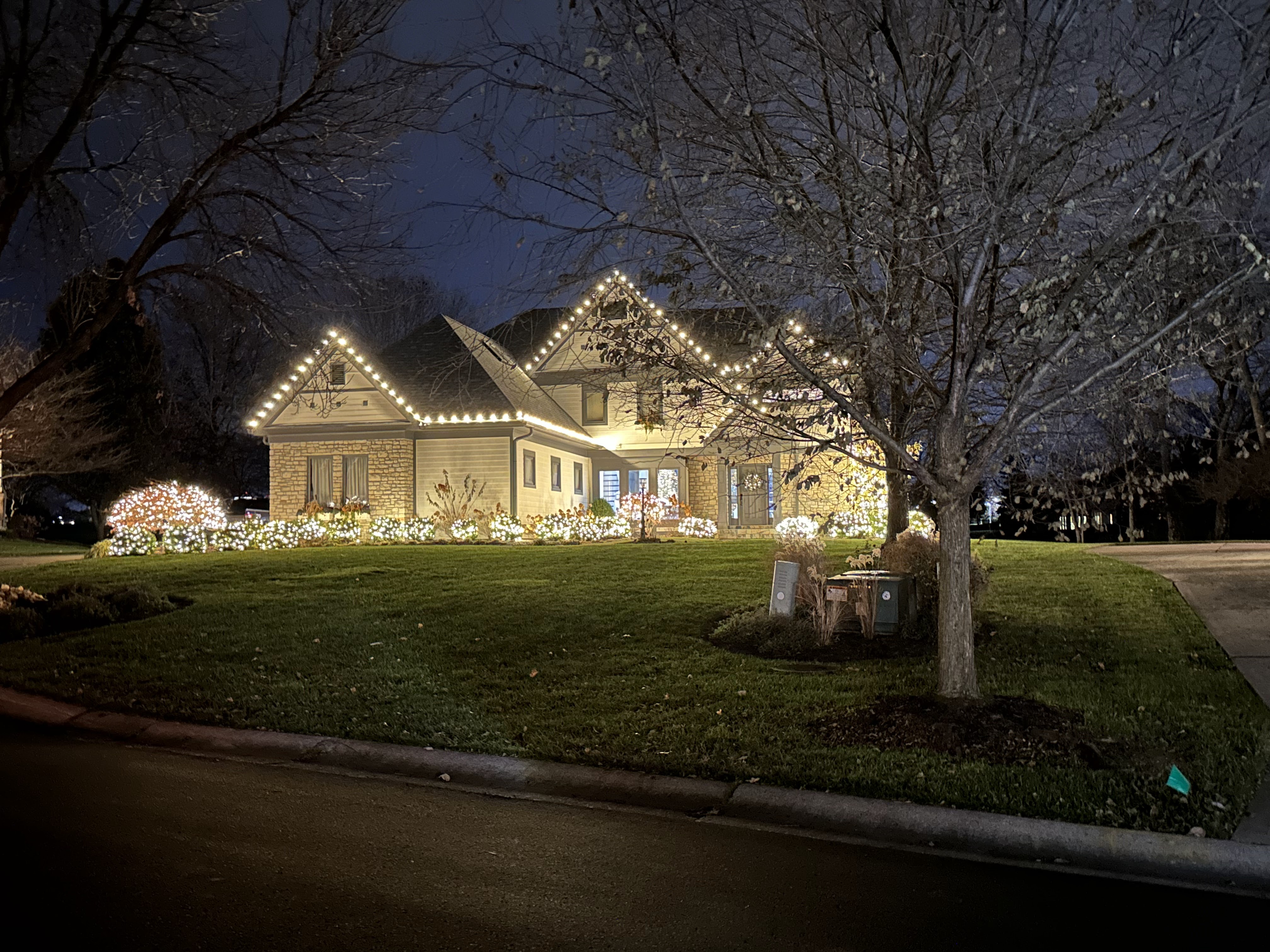
How do I overcome fear of sending $3,000-$4,000 quotes?
Remember you're not selling to people like you—you're selling to affluent customers with completely different financial perspectives. Their monthly mortgage exceeds what you're charging for the entire season. They spend more annually on coffee than your installation costs. The discomfort you feel sending premium quotes is your limiting belief, not market reality. Test it: send 10 comprehensive $3,000+ quotes and track results. You'll discover customers accept premium pricing when presented with clear value.
What's the fastest way to increase average ticket from $1,000 to $2,000?
Quote everything on every property—never send a quote with only the front roofline. Include ridge lines, ground stakes, trees, columns, wreaths, and garland on every single quote as options customers can select or decline. This single change typically increases average ticket 30-50% immediately as customers self-select add-ons you weren't previously offering. Use professional mockup software (Holiday Home Concepts, Canva, or similar) to visualize the complete installation.
Should I focus on residential or commercial accounts for scaling?
Residential provides more consistent volume with less seasonality in decision-making. Commercial accounts (HOA entrances, shopping centers, churches) offer larger individual projects but fewer total opportunities and longer sales cycles. Most successful $500,000+ businesses are 70-80% residential with strategic commercial accounts supplementing revenue. Commercial should be pursued opportunistically, not as primary growth strategy.
What's the biggest mistake installers make when trying to scale?
Refusing to invest in marketing while expecting revenue to magically increase. Installers want to scale from $50,000 to $500,000 while maintaining the same $500 annual marketing budget that generated their current revenue. Scale requires proportional marketing investment—there's no way around it. The second biggest mistake: keeping average ticket at $1,000 while trying to scale, which creates operational complexity that makes $500,000 nearly impossible to achieve profitably.
Scaling from $50,000 to $500,000 isn't mysterious—it's mathematical. Increase average ticket to $2,000+ through comprehensive quoting. Generate 1,250+ leads annually through systematic marketing investment. Build 2-3 excellent crews through proper hiring, training, and leadership. Implement CRM systems that ensure no lead falls through cracks.
The installers generating $500,000-$1,000,000+ annually aren't special—they simply understand the mathematics of scaling and execute consistently. They quote comprehensively, invest proportionally in marketing, build systems that work without them, and maintain premium pricing that justifies the operational complexity.
You're in the peak season window right now. The next 3-4 weeks determine whether you hit your annual revenue target or fall short. Answer every lead within 60 minutes. Send comprehensive quotes immediately. Follow up relentlessly. Deploy every yard sign you own.
The math works if you execute the systems. Now go take action and make it happen.
Copyright ©2025 All Right Reserved website designed by christmaslights.io
Terms of Service / Privacy Policy
Have questions or need assistance?
Contact us at (855)619-LITE


